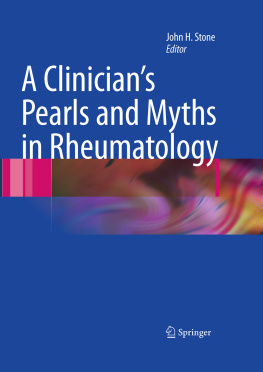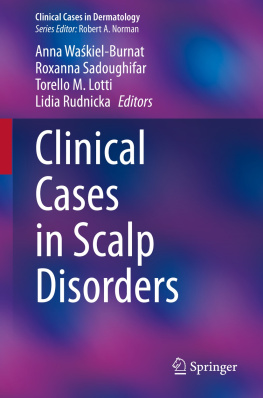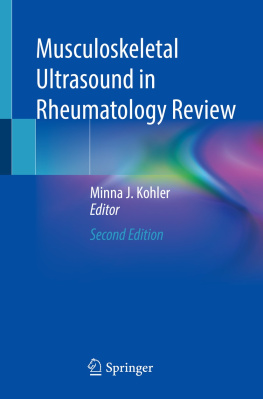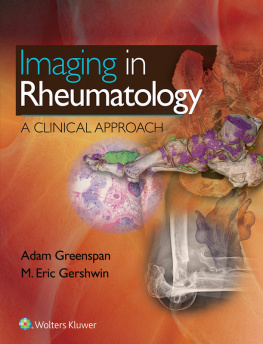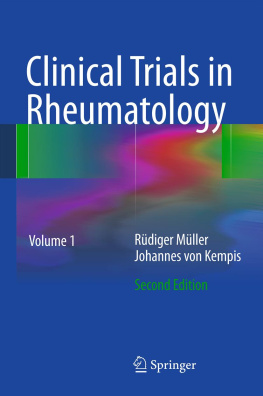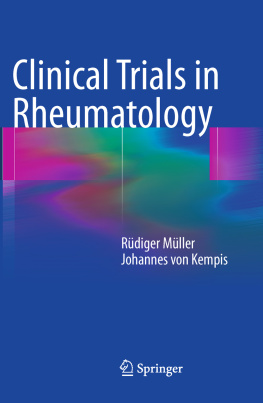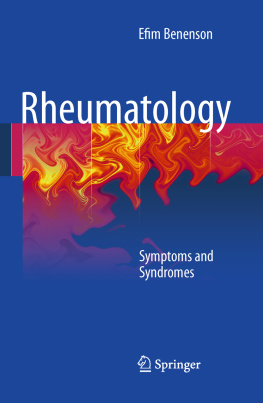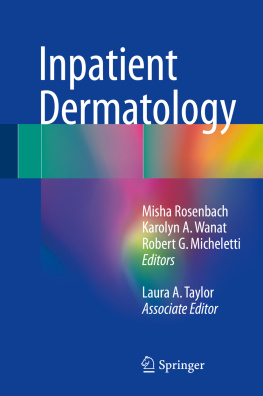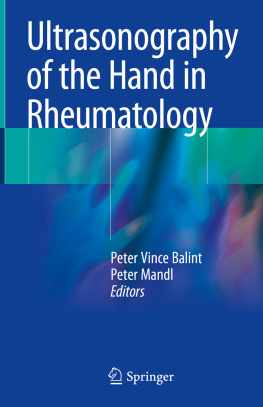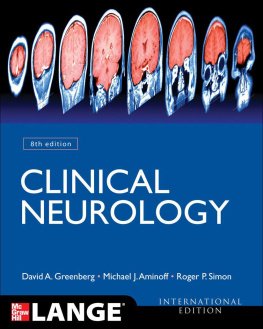John H. Stone (ed.) A Clinician's Pearls and Myths in Rheumatology 10.1007/978-1-84800-934-9_1 Springer Science+Business Media B.V. 2009
1. Rheumatoid Arthritis
James R. O'Dell 1, Josef S. Smolen 2, Daniel Aletaha 2, Dwight R. Robinson and E. William St. Clair 3
(1)
Department of Internal Medicine Omaha, University of Nebraska Medical Center, Nebraska, 68198-3025, USA
(2)
Department of Rheumatology, Medical University of Vienna, Waehringer Guertel 1820, Vienna, A-1090, Austria
(3)
Medicine Department, Duke University Medical Center, Box 3874 DUMC, Durham, NC 27710, USA
Abstract
Rheumatoid arthritis (RA) affects all ethnic groups. Women are nearly three times more likely than men to develop the disease. The pattern of arthritis typically favors distal and symmetrical involvement. The most commonly involved joints are the wrists, metacarpophalangeal, proximal interphalangeal, and metatarsophalangeal joints. However, many other joints can also be involved. Shoulder, elbow, hip, knee, or neck disease (particularly at the atlanto-axial joint, C1C2) are frequently observed. Most presentations are subacute in nature, with the insidious onset of fatigue, morning stiffness, and arthritis. More explosive onsets of disease are also described. If untreated, RA is a chronic, progressive disorder that leads to joint damage, disability, and early mortality. A variety of extraarticular features are typical of seropositive RA (RA associated with the presence of rheumatoid factor in the serum). These include rheumatoid nodules, secondary Sjgren's syndrome, interstitial lung disease, scleritis, and rheumatoid vasculitis. Approximately 70% of patients with RA are rheumatoid factor positive. An approximately equal percentage has antibodies directed against cyclic citrullinated peptides (i.e., anti-CCP antibodies). There is substantial but not complete overlap between groups of patients who are rheumatoid factor positive and those who have anti-CCP antibodies. Some patients have RA that appears in every way to be typical disease yet do not have either rheumatoid factor or anti-CCP antibodies. These patients are said to have seronegative RA. Radiographic studies in RA reveal joint space narrowing, erosions, deformities, and periarticular osteopenia. Treatment approaches now emphasize early interventions designed to suppress joint inflammation entirely as soon as possible after the onset of clinical disease.
1.1 Overview of Rheumatoid Arthritis
Rheumatoid arthritis (RA) affects all ethnic groups. Women are nearly three times more likely than men to develop the disease.
The pattern of arthritis typically favors distal and symmetrical involvement.
The most commonly involved joints are the wrists, metacarpophalangeal, proximal interphalangeal, and metatarsophalangeal joints. However, many other joints can also be involved. Shoulder, elbow, hip, knee, or neck disease (particularly at the atlanto-axial joint, C1C2) are frequently observed.
Most presentations are subacute in nature, with the insidious onset of fatigue, morning stiffness, and arthritis. More explosive onsets of disease are also described.
If untreated, RA is a chronic, progressive disorder that leads to joint damage, disability, and early mortality.
A variety of extraarticular features are typical of seropositive RA (RA associated with the presence of rheumatoid factor in the serum). These include rheumatoid nodules, secondary Sjgren's syndrome, interstitial lung disease, scleritis, and rheumatoid vasculitis.
Approximately 70% of patients with RA are rheumatoid factor positive. An approximately equal percentage has antibodies directed against cyclic citrullinated peptides (i.e., anti-CCP antibodies). There is substantial but not complete overlap between groups of patients who are rheumatoid factor positive and those who have anti-CCP antibodies.
Some patients have RA that appears in every way to be typical disease yet do not have either rheumatoid factor or anti-CCP antibodies. These patients are said to have seronegative RA.
Radiographic studies in RA reveal joint space narrowing, erosions, deformities, and periarticular osteopenia.
Treatment approaches now emphasize early interventions designed to suppress joint inflammation entirely as soon as possible after the onset of clinical disease.
1.1.1 Diagnosis
Myth: A patient must fulfill at least four of the seven American Rheumatism Association (now called the American College of Rheumatology; ACR) classification criteria to be diagnosed as having rheumatoid arthritis (RA) .
Reality : Diagnostic criteria do not exist for RA. The ACR classification criteria developed in 1987 were not intended for the purpose of diagnosing individual patients, but rather for defining patient populations that are comparable across different clinical studies (Table ).
Table 1.1
1987 Revised ARA criteria for the classification of rheumatoid arthritis
For classification purposes, a patient is said to have RA if he or she has satisfied at least four of the following seven criteria. Criteria 14 must have been present for at least 6 weeks. Patients with two clinical diagnoses are not excluded. Designation as classic, definite, or probable RA is not to be made |
1. Morning stiffness Morning stiffness in and around the joints, lasting at least 1 h before maximal improvement |
2. Arthritis of three or more joint areas At least 3 joint areas simultaneously have had soft tissue swelling or fluid (not bony overgrowth alone) observed by a physician; the 14 possible joint areas are right or left proximal interphalangeal (PIP) joints, metacarpophalangeal (MCP) joints, wrist, elbow, knee, ankle, and metatarsophalangeal (MPT) joints |
3. Arthritis of hand joints At least 1 area swollen (as defined above) in a wrist, MCP or PIP joint |
4. Symmetric arthritis Simultaneous involvement of the same joint areas (see 2 above) on both sides of the body (bilateral involvement of PIPs, MCPs, or MTPs is acceptable without absolute symmetry) |
5. Rheumatoid nodules Subcutaneous nodules, over bony prominences, or extensor surfaces, or in juxta-articular regions, observed by a physician |
6. Serum rheumatoid factor Demonstration of abnormal amounts of serum rheumatoid factor by any method for which the result has been positive in <5% of normal control subjects |
7. Radiographic changes Radiographic changes typical of RA on posteroanterior hand and wrist radiographs, which must include erosions or unequivocal bony decalcification localized to or most marked adjacent to the involved joints (osteoarthritis changes alone do not qualify) |
In addition, the RA classification criteria were developed in patients with established RA, not in patients with early inflammatory arthritis. Thus, they have limited applicability for classifying patients with early disease, who may lack several of the relevant criteria (e.g., erosions or rheumatoid nodules) (Aletaha et al. ). The gold standard for the diagnosis of RA continues to be the clinical pronouncement by a rheumatologist.
1.1.2 Clinical Features
Myth: Rheumatoid arthritis patients rarely get gout .
Reality : Adequate data on this association are lacking, but this myth is almost certainly an artifact of mid-twentieth century RA treatment regimens. High-dose aspirin, a uricosuric agent, was used in majority of RA patients in that era. With the development of more effective treatment regimens for RA that do not involve high-dose aspirin, it is not rare to see the two diseases in the same patient.

